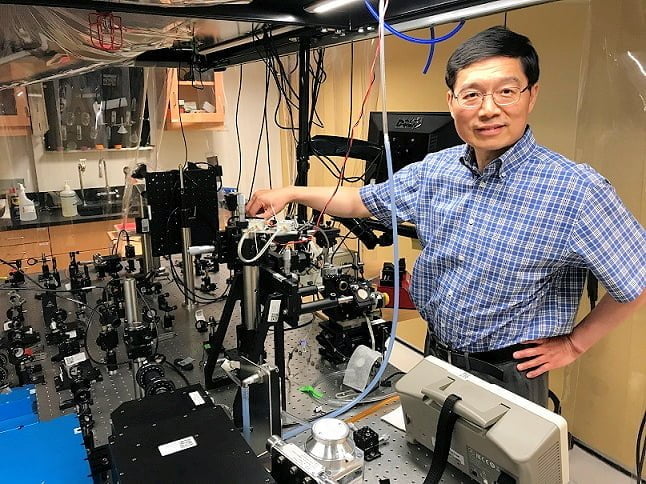Caltech’s Lihong Wang developed has developed scientific camera technology that can reach blistering speeds of 100 trillion frames per second, fast enough to see light travel or to image sonoluminescence in real timein 3 dimensions.
Wang calls the new iteration “single-shot stereo-polarimetric compressed ultrafast photography,” or SP-CUP. In CUP technology, all of the frames of a video are captured in one action without repeating the event and this makes a CUP camera extremely fast (a quality CCTV cameras runs at just 60 frames per second). Wang added a third dimension to this ultrafast imagery by making the camera ‘see’ more like humans do.
When a person looks at the world around them, they perceive that some objects are closer to them, and some objects are farther away. Such depth perception is possible because of our 2 eyes, each of which observes objects and their surroundings from a slightly different angle. The information from these 2 images is combined by the brain into a single 3-D image.
The SP-CUP camera works in essentially the same way, Wang says.
“The camera is stereo now,” he says. “We have 1 lens, but it functions as 2 halves that provide 2 views with an offset – these 2 channels mimic our eyes.”
According to Wang, just as our brain does with the signals it receives from our eyes, the computer that runs the SP-CUP camera processes data from these 2 channels into 3-dimensional movie.
SP-CUP also features another innovation that no human possesses: the ability to see the polarization of light waves. The polarization of light refers to the direction in which light waves vibrate as they travel. Polarized light is altered so that its waves all vibrate in the same direction. This can occur through natural means, such as when light reflects off a surface, or as a result of artificial manipulation, as happens with polarizing filters.
Though our eyes cannot detect the polarization of light directly, the phenomenon has been exploited in a range of applications: from LCD screens to polarized sunglasses and camera lenses in optics to devices that detect hidden stress in materials and the 3-dimensional configurations of molecules.
#securityelectronicsandnetworks.com









